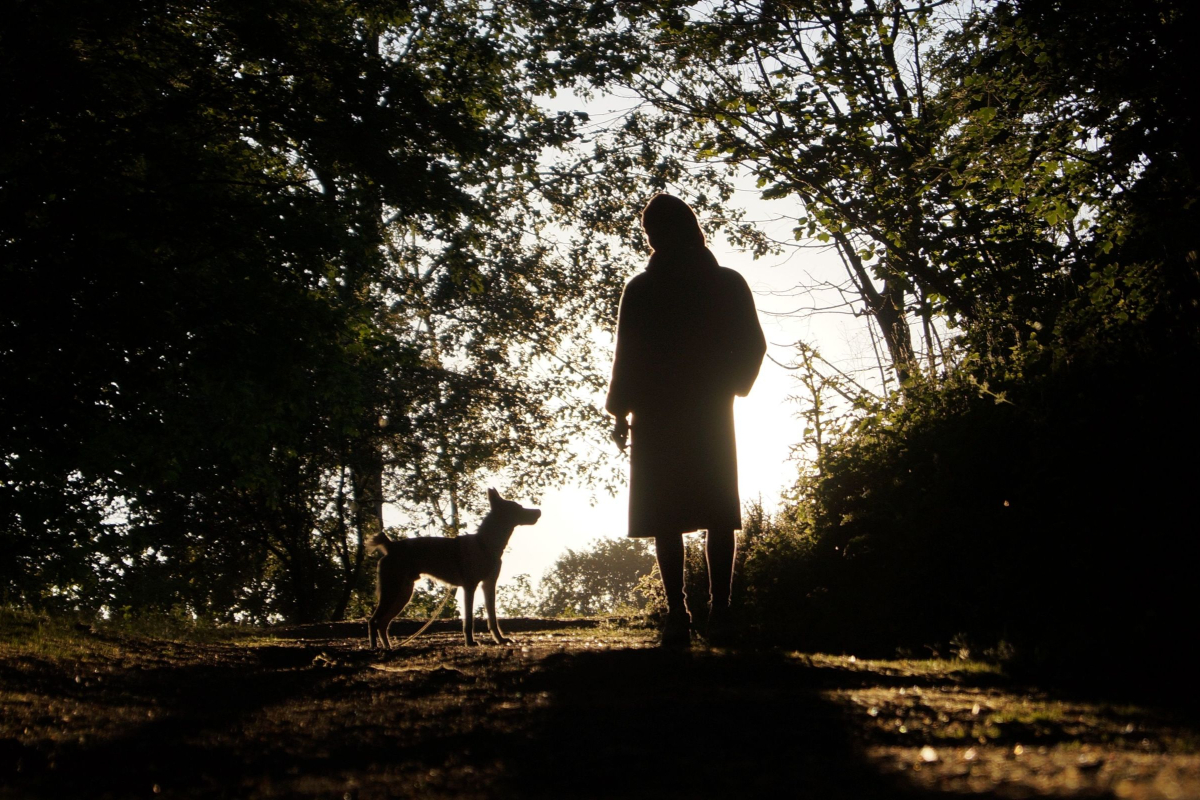TRANQUILITY TRAINING EXERCISES
Listed below are guidelines for a series of daily training exercises, taking less than 10 minutes to complete. These are the foundation work for later desensitization and counterconditioning exercises. It may be more successful to start with the dog on leash and head collar, then progress to off-leash training on the second rotation through the exercises. If the dog’s problematic behaviors only occur outside the home, do all the tranquility training on leash. If a dog routinely gets bored, distracted, agitated, or distressed during these exercises, they can be broken down into two 5-minute sessions. The person with the most control over the pet should begin the training first.
- Find a quiet place in your home for initial training.
- In some cases, you may want to use a small rug or bed as a location to train your pet to settle and relax.
- Using a rug or bed will allow you to take this item to other locations where your pet may need to be calm. Naturally if the problem occurs outdoors, this is not necessary.
- Having a reliable “go to X” command is very helpful for a wide range of undesirable behaviors ranging from obnoxious greeting behaviors to aggression.
- This can be used in separation anxiety exercises for independence training and teaching a safe place to remain when alone.
- In all of the exercises, the dog has to do a simple command (sit or down) and then remain in that position and in a tranquil state to gain the reward.
- You may want to add in a key phrase like “relax” or “easy” to teach the dog to associate relaxation with sit/down and stay.
- The goal is for the pet to be relaxed and calm.
- Relaxation is measured by watching the facial expressions and body postures of your pet; ears should be relaxed and the body soft and loose.
- You also want slow and relaxed respirations
- As you progress through the exercises, the handler will start to engage in mild distractions during the command phase
- Remember that the handler throughout the exercise should give the dog verbal direction. The distractions will become greater as the training progresses.
- Noncompliance is not rewarded. Just turn away, take a short (e.g., 30-second) break, and adjust the exercise to increase chances of success then try again.
- Between each exercise, the dog should break the sit, get up and move, and sit again. To get this to happen, the handler can move to another spot in the room and call the dog to them for the next exercise.
- The first round of these exercises should be done inside the house with minimal household distractions; other dogs should be confined elsewhere, it should be quiet, etc.
- The second round can be in slightly more distracting circumstances such as in a secure yard
- Once the dog has successfully completed these exercises in at least two different locations, you can progress to desensitization and counterconditioning to the trigger stimuli.
Example Training Schedule
Day One
- Sit
- Sit, watch you for 2 seconds
- Sit, watch you for 5 seconds
- Release for a rest
- Go to spot, sit
- Sit, watch you for 3 seconds
- Sit, watch you while you take one step backwards and return
- Release for a rest
- Go to spot, sit, stay for 3 seconds
- Sit, watch you while you raise your free arm to chest level and return it to your side again
- Go to spot, sit, watch you for 10 seconds
- Sit while you walk one step to the right and return
- Go to spot, sit while you walk two steps backward and return
- Sit, watch you for 5 seconds
- Go to spot, sit while you walk three steps backward and return
- Sit, watch you for 5 seconds
Day Two
- Repeat steps 1–16, varying the time the pet remains in place from 3 to 10 seconds
- Vary the direction of movement; go left then back, swivel and turn away one step and return, or turn in a circle or march in place
- Vary the distraction, perhaps clapping your hands softly two to three times
Subsequent Days
- For the remainder of the first week, continue to vary the amount of time the pet remains stationary in each step.
- Continue to vary the distractions, include jumping jacks, knocking on furniture, talking, jogging in place, turning your back on the dog, etc.
- After a week, return to Day One and repeat in a different location.
- Repeat with different family members handling the pet

